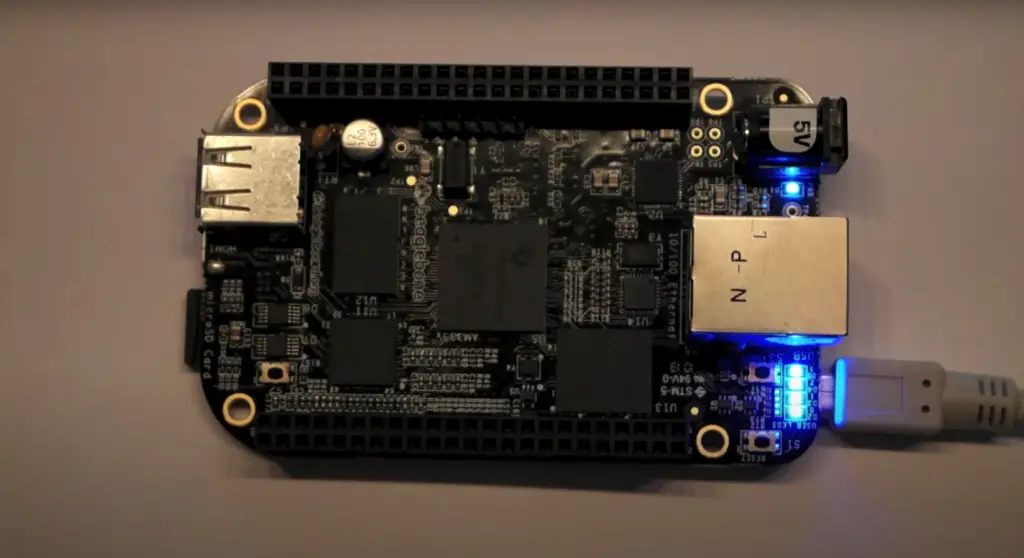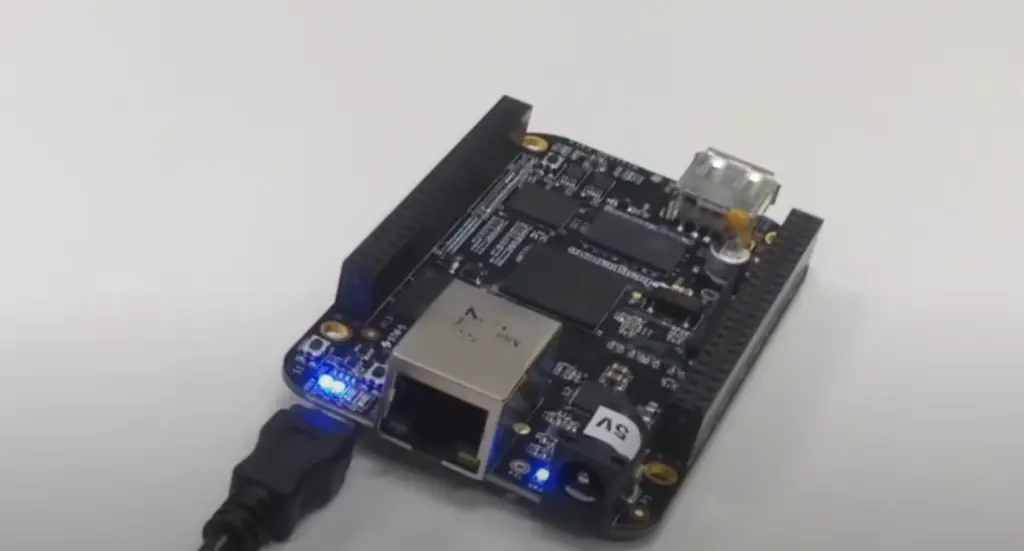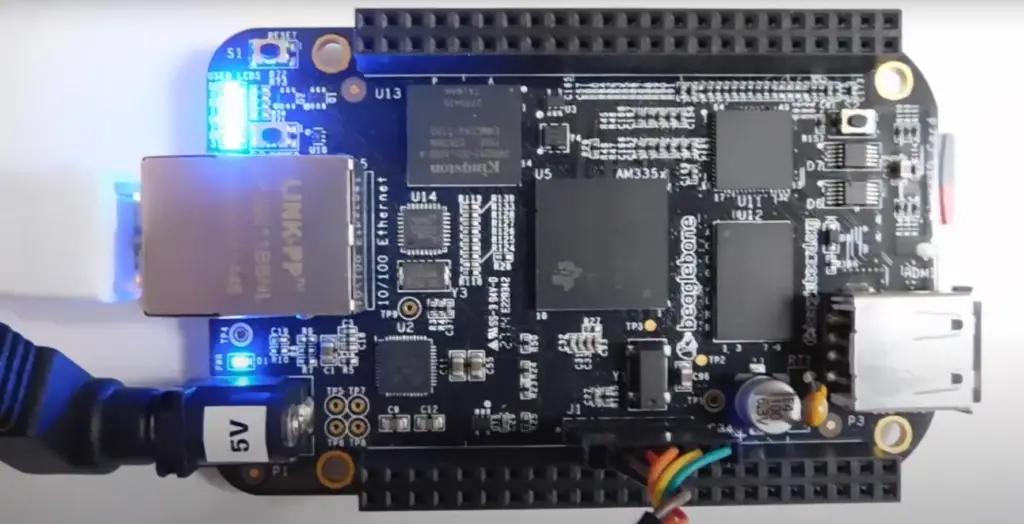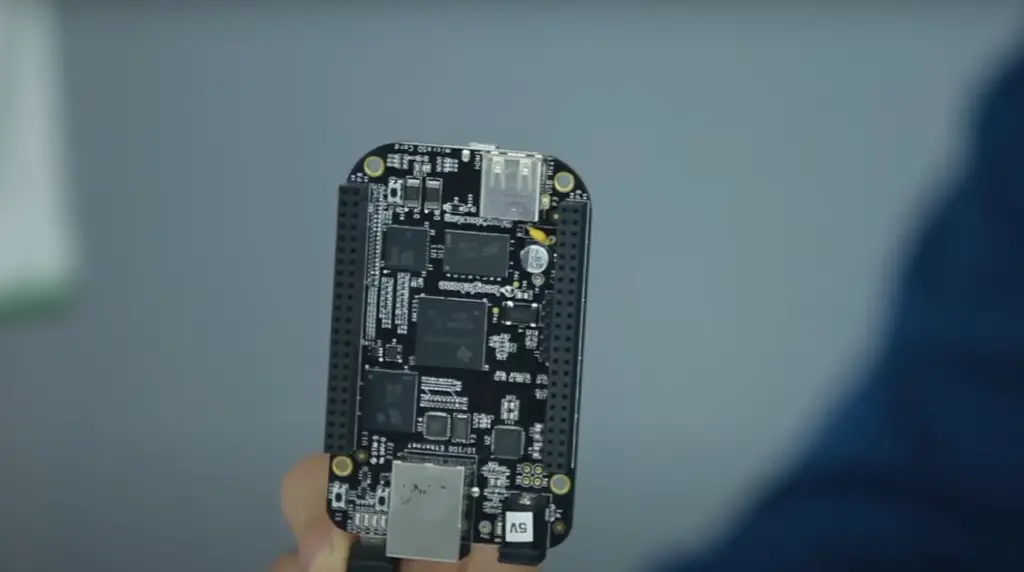If you’re in the market for an impressive single board computer, the BeagleBone Black is a great option. This powerful little device can do a lot, and this article will give you a comprehensive overview of everything it has to offer. We’ll answer common questions about the BeagleBone Black, provide a full product review, and share some tips on how to get the most out of this amazing little machine. So if you’re curious about the BeagleBone Black or just want to learn more about it, keep reading!
Single Board Computers in General
They are most often used for hardware prototyping, embedded projects and robotics. They have become increasingly popular in recent years as they can offer an easy-to-use solution at an affordable price point. Single board computers come in many shapes and sizes with different combinations of features depending on the intended application.

The BeagleBone Black is one such single board computer that has gained popularity over the past few years due to its open source software support and powerful ARM Cortex A8 processor. In this article we will take an in-depth look at the BeagleBone Black, its features and capabilities, as well as review some of the popular applications and projects it can be used for.
The Beaglebone Black
It features a 1GHz ARM Cortex A8 processor with 512MB DDR3 RAM and 4GB on-board flash storage. The board has multiple interface ports including USB, HDMI, Ethernet and more which allow users to easily connect devices such as keyboards, displays and cameras.
The Beaglebone Black runs an open source Linux operating system called Ångström which provides access to a wide range of applications and tools for developing projects. It also supports a variety of programming languages such as Python, JavaScript and C++, making it easy to develop custom software applications. [1], [2], [3], [4], [5], [6]
What Projects Can You Do With BeagleBone Black?
But what can it be used for? You will be pleased to know that the BeagleBone Black has a wide range of applications, from industrial control systems and robotics, to home automation projects.
For industrial applications, the board can be used to create programmable logic controllers (PLCs) which are used to automate machines and processes. It is also very useful in robotics as it offers powerful processing power and many digital I/O ports which allow you to easily interface with servos, motors and sensors. Additionally, its on-board storage allows you to store large amounts of data such as images obtained by cameras or readings from various sensors.
The main focus of the BeagleBone Black are IoT projects, and the board is perfect for this due to its size, low power requirements and connectivity options. With its built-in Ethernet and Bluetooth capabilities, it can easily be used in home automation projects such as smart lighting or climate control systems. It can also be used to create digital signage displays or a surveillance system with motion detection.

The Beaglebone Black has many features that make it an ideal choice for embedded development projects. One of its most notable features is its over-the-air update capability which allows users to install updates and bug fixes without having to physically plug in the board. This can be especially useful when working on remote or hard-to-reach devices. [2], [6]
What Are the Main Pros of This Board?
The BeagleBone Black has many advantages that make it an appealing option in the single board computer market. Let’s discuss some of its key advantages.
Open source software support
One of the main benefits of the BeagleBone Black is its open source software support. The board comes preloaded with a full Linux distribution and a suite of open source software, allowing users to easily develop their own custom applications that run on the BeagleBone Black. Additionally, it has an extensive online community of developers who can help answer questions or provide assistance with specific tasks.
High performance
The BeagleBone Black is equipped with an AM335x 1GHz ARM Cortex-A8 processor and 512MB of DDR3 RAM, making it capable of running complex applications quickly and reliably. It also features integrated Ethernet capability, as well as onboard flash storage for data retention in the event of power outages or system crashes. This makes the BeagleBone Black ideal for mission critical or time-sensitive tasks.
Efficient external sensors reading
The BeagleBone Black’s onboard ADC (analog-to-digital converter) and GPIO pins make it ideal for reading data from external sensors. This allows users to easily detect changes in the environment or control connected hardware, such as lights, motors, and valves. Additionally, the board is capable of interfacing with a wide range of third-party hardware via its USB port.
What’s more, with 2 46 pin headers and PWM capability, the BeagleBone Black can easily be integrated with a wide range of external devices.
Low power consumption
The BeagleBone Black is designed to keep power consumption low, making it an ideal choice for embedded projects or applications in remote areas where access to a power source may not always be available. Additionally, its small form factor makes it easy to embed into virtually any project or system.
Huge online community
The BeagleBone Black has a large online community of developers and users who are always willing to help answer questions or offer advice on projects. Additionally, the board’s open source software support means that users can easily modify existing applications or create their own custom solutions, with help from the online community if necessary.

On board storage
The BeagleBone Black is equipped with 4GB of onboard storage, making it ideal for applications that require a large amount of data to be stored locally. Additionally, the board can easily be expanded with external storage devices via its USB port or by connecting an SD card directly to the board. [2], [5], [6]
What Are the Cons You Should Consider?
Still, the BeagleBone Black is not without its drawbacks. Here are some of the cons that should be taken into consideration before choosing this board for a project.
Lack of USB ports
When choosing a single board computer, one of the most important considerations should be the number of USB ports it has. The number and type of USB ports will determine how many external devices can be connected to your SBC at once, as well as what types of peripherals you can use with it.
While BBB has a large amount of I/O available, its lack of USB ports may be an issue for some users. The board comes with only a single micro-USB port, which may not be sufficient for more complex applications.
This means users may have to resort to using USB-to-Serial adapters or other external devices in order to get around the lack of ports.
Expensive compared to other SBCs
While this may be a worthwhile investment for more complex projects, it can be difficult to justify spending this much money on an SBC when there are other cheaper alternatives available.

This is because the BeagleBone Black is a more powerful and feature-rich board, which may be worth the extra cost depending on your needs. [2], [5], [6]
FAQ
Is BeagleBone better than Raspberry Pi?
The answer to this question depends on the user’s needs. The Raspberry Pi is a great starter board for those who are just getting into the world of single board computing and embedded systems. It’s also inexpensive and makes it easy to get started with basic projects.
However, if you need more power and advanced features, BeagleBone may be the better option. It has a more powerful processor than Raspberry Pi (1GHz ARM Cortex-A8) and multiple expansion headers for connecting additional peripherals like sensors and controllers. What makes BeagleBone stand out is onboard storage, with 4GB of onboard eMMC Flash, which makes it easier to store data and applications locally. It also has a built-in 4 port Ethernet switch for networking multiple devices together, and can easily be connected to the internet.
Raspberry Pi however is compatible with more Linux operating systems, so if you need a wider selection of OS options, you may have to go with Raspberry Pi. Ultimately, it’s up to you and your needs. If you know exactly what you need, then the choice is clear.
What is BeagleBone Black used for?
BeagleBone Black is a popular single board computer (SBC) that can be used for a variety of applications. It’s an open-source platform based on Linux, and its small form factor makes it perfect for projects where space is at a premium. With its powerful processor and multiple I/O pins, the BeagleBone Black can be used to create interactive robots, connected home appliances, digital signage displays, audio processing systems, 3D printers, and many other exciting projects.
Its extensive network of GPIOs (general purpose input/output) pin headers are ideal for connecting sensors or actuators to monitor or control external components. This makes the BeagleBone Black an ideal choice for IoT (Internet of Things) applications.
What is the difference between the Raspberry Pi 3 and the BeagleBone Black?
The BeagleBone Black and Raspberry Pi 3 are both single board computers (SBCs) which offer great features for a low price. However, the two boards vary in several respects.
The BeagleBone Black offers higher computing power than the Raspberry Pi 3 with its 1GHz ARM Cortex-A8 processor and 512MB of DDR3 RAM. It also has on-board eMMC storage of 4GB compared to the Raspberry Pi’s microSD card slot for expandable storage. As such, it is better equipped for running applications that require more processing power or memory.
On other hand, Raspberry Pi is compatible with more OS and software than the BeagleBone Black, which is limited to Debian and Android. Furthermore, Raspberry Pi 3 has a more expansive range of accessories and add-ons available for it compared to the BeagleBone Black. While not always the case, the Raspberry Pi has more project ideas that are available than the BeagleBone Black. They are pretty close however.
When it comes to pricing, the BeagleBone Black is slightly more expensive than the Raspberry Pi 3, costing around $60 compared to the Raspberry Pi’s price of $35. Ultimately, users must weigh up the pros and cons of each board before reaching a decision.
Is BeagleBone Black a microcontroller?
The BeagleBone Black is a single-board computer, not a microcontroller. It runs the Linux operating system and includes on-board flash memory, 512 MB of DDR3 RAM, and 4GB of eMMC onboard storage. It has two 46-pin headers with access to GPIOs, PWM, ADC, UARTs, SPI buses and more. This makes it an ideal platform for applications such as embedded computing projects and robotics.
Overall, the BeagleBone Black is an ideal choice for those looking for a powerful single-board computer capable of handling more advanced tasks than a microcontroller can handle.
Useful Video: G-REVIEW by Gravitechthai: Beaglebone Black (User guide)
Conclusion
BeagleBone Black is a powerful single-board computer designed to make embedded computing projects easier. With its impressive array of features, the BeagleBone Black offers plenty of potential for developers and hobbyists alike. Its relatively low cost and open source platform makes it accessible to anyone looking to get started with embedded computing.
From the wide selection of expansion boards available, to its versatile I/O capabilities, the BeagleBone Black is an ideal choice for those looking for high performance in a small package. Its wide range of applications from robotics, to home automation and beyond are sure to keep you busy tinkering and exploring what this tiny board can do.
The main perks of BeagleBone Black are its flexibility and open source nature. With its ability to interface with a wide range of devices, you can easily customize your project for your own unique needs. The community support and resources available also make it easy to get started with the board quickly.
And we couldn’t not mention an onboard storage capacity of 4GB which makes it an even more attractive option for those looking for a single board computer.
All in all, the BeagleBone Black is an impressive little board that packs plenty of punch in its small frame. Whether you’re just getting started with embedded computing or looking to build a project from scratch, the BeagleBone Black should definitely be on your list of boards to consider. Thanks for reading our BeagleBone Black review! We hope it was informative and helpful as you explore this powerful and popular platform. Good luck with your projects!
References
- https://www.theregister.com/2013/06/11/review_beagleboard_beaglebone_black/
- https://www.electromaker.io/blog/article/beaglebone-black-vs-raspberry-pi
- https://embedjournal.com/beaglebone-a-quick-review/
- https://www.technologyreview.com/2013/04/23/178717/beaglebone-black-a-makers-dream/
- https://www.educba.com/raspberry-pi-3-vs-beaglebone-black/
- https://www.thewindowsclub.com/single-board-computers













Leave a Reply